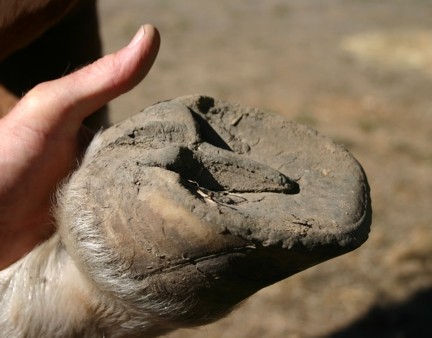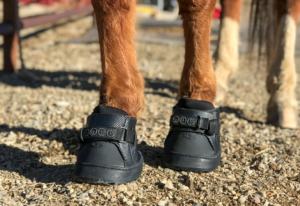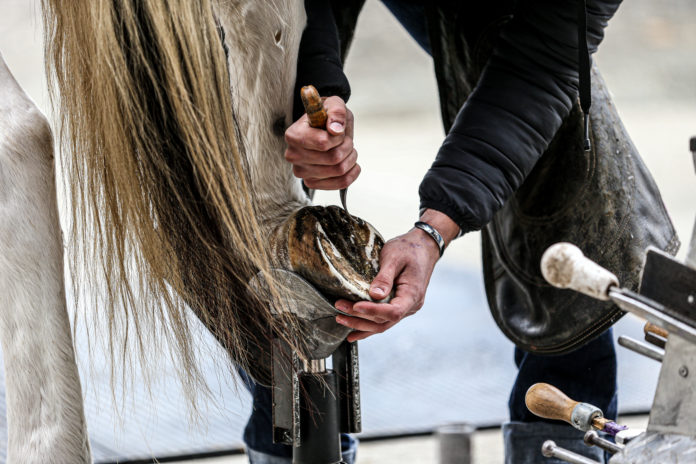Hoof care practitioners and veterinarians provide valuable knowledge and services to improve and/or maintain our horse’s hoof care regimen, and they’re happy to help, but they don’t ultimately hold the keys to barefoot success. It’s the horse owner who has the power and responsibility to keep their horse’s hooves in shape.

Hoof Care Practitioner, Linda Cowles from Santa Rosa, California, shared her thoughts on who really heals and cares for these horse’s feet.
Their owners. Horse owners are horses’ most powerful ally.
I started out trimming brood mares and neglected backyard horses, and learned the hard way that I can only save these horses with their owner’s assistance.
When I was struggling in muddy paddocks trying to trim feet that hadn’t been trimmed in the last six months, or trying to devise a bandage that would stay on an abscessed foot when the horse’s pasterns were buried in mud, I realized I couldn’t do it on my own. I needed to focus on horses I could help.

I can help most of these horses, but I can’t change the owners. I now let them know what they need to do to help their horse, and let them know that, if they work to heal their horse, I’ll work hard next to them. If they can’t do their part, I give them a few names of folks who may be willing to work with them. It’s a heart breaker.
Pete Ramey consoled me, telling me I’d made the right decision to not work with the owner of a horse that was fed to obesity, had laminitis, and chronic thrush. He asked me, “When the vet looks at that foot and asks who the hoof care provider is, do you want your name associated with it? Is there anything you can do to change the owner?”
Tough. I always leave the door open, telling the owner that if they decide to try working with me, I would love to work with them. I also remind them that the effects of severe laminitis are NOT reversible. This is their horse’s life, and no, they don’t get a do-over when they realize they were wrong. Loving owners heal their horses with the care and management they provide, along with the assistance of people like me.
These are strong words from a practitioner who has been in these situations many times. It doesn’t matter how well the horse is trimmed, that the hoof was fitted for boots and pads, that a different diet and/or living conditions were recommended if the owner doesn’t ultimately follow through.
 We have never had more knowledge and tools at our disposal to help our equine friends than we do today. We know that a barefoot lifestyle can improve a horse’s overall health and longevity. We know that using protective hoof boots, or therapy boots when necessary, can make a huge difference in a horse’s usability and/or recovery.
We have never had more knowledge and tools at our disposal to help our equine friends than we do today. We know that a barefoot lifestyle can improve a horse’s overall health and longevity. We know that using protective hoof boots, or therapy boots when necessary, can make a huge difference in a horse’s usability and/or recovery.
Hoof boots can be an essential part of maintaining a barefoot horse, along with maintaining a regular trim schedule. Listen to your trimmer’s suggestions and advice to keep your horse’s hooves healthy. Remember your practitioner is on your side. Help them help you keep a happy and healthy barefoot horse.






That is so true ! Too many owners thinks they re doing well…but so wrong for the horse.
1rst thing is to educate people Now its coming gently. Hy from switzerland , an easyboots cloud user, Nicole
Comments are closed.